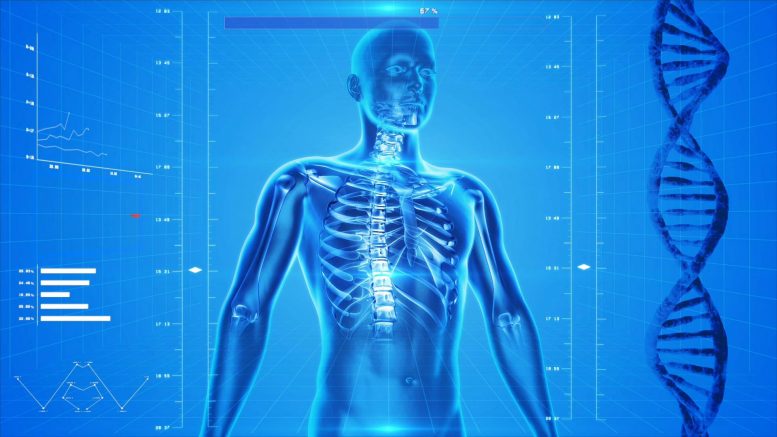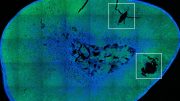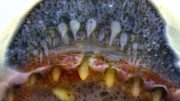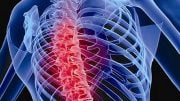
Both rodents and humans release a bone-derived hormone called osteocalcin in response to acute stress, researchers reported on September 12th, 2019, in the journal Cell Metabolism. This fight-or-flight pathway is distinct from others mediated by hormones released by the adrenal glands, such as cortisol, adrenaline, and norepinephrine. The findings help to explain why patients and animals lacking cortisol and additional molecules produced by the adrenal glands can still mount the acute stress response.
“The notion that bone mediates the stress response is totally novel, as is the notion that the adrenal glands do not mediate the stress response,” says senior author Gerard Karsenty of Columbia University Irving Medical Center. “This verifies the concept that bone was invented in part as a tool to fight acute danger. Clinically, it suggests that we respond to stress better when we are young and have high osteocalcin than when we are older and have much less of it.”
The acute stress response, also known as the fight-or-flight response, is mediated by the sympathetic nervous system and plays a critical role in helping animals react to potentially life-threatening situations. The adrenal glands, which sit on top of the kidneys, release a variety of hormones such as adrenaline, norepinephrine, and cortisol. This triggers a cascade of wide-ranging physiological responses, including an increase in temperature, heart rate, respiration rate, blood pressure, and energy expenditure, preparing the muscles for action.
One conundrum about the acute stress response is that glucocorticoid hormones such as cortisol require hours to alter physiological responses, which seems inconsistent with the need for an immediate response to danger. “Although this certainly does not rule out that glucocorticoid hormones may be implicated in some capacity in the acute stress response, it suggests the possibility that other hormones, possibly peptide ones, could be involved,” Karsenty says.
Karsenty and his colleagues suspected that bone-derived hormones could contribute to the acute stress response, based on their hypothesis that the original purpose of bone was to respond to danger. Bone protects internal organs from trauma, allows animals to move and escape danger, and mediates hearing, which is one way to detect threats. Moreover, the bone-derived hormone osteocalcin is known to increase muscle function during exercise, which is necessary for animals attempting to escape danger, and to enhance memory, which is needed in the wild to remember the locations of food and predators.
In support of this idea, Karsenty and his team found that blood levels of the bioactive form of osteocalcin, but not other bone-derived hormones, rose by 50% in mice that were restrained for 45 minutes, and by 150% 15 minutes after they received a stressful stimulus. Mice exposed to a cotton swab soaked with a component of fox urine also showed a rise in osteocalcin levels, which peaked at 2.5 minutes and remained steady for at least 3 hours. Similarly, circulating levels of bioactive osteocalcin rose in humans exposed to stress from public speaking and cross-examination.
Genetic experiments in mice showed that osteocalcin was necessary for a robust increase in energy expenditure, circulating glucose, temperature, and heart rate upon exposure to stressors. Moreover, a single injection of osteocalcin was sufficient to trigger the acute stress response.
Consistent with past research on the fight-or-flight response, the stress-related surge in osteocalcin in mice depended on a brain region called the amygdala, also known as the brain’s fear center. It did not, however, require the adrenal glands. “Osteocalcin could explain past observations of an intact flight-or-flight response in humans and other animals lacking glucocorticoids and additional molecules produced by the adrenal glands,” Karsenty says.
Additional experiments revealed the specific chain of events. Acute stressors trigger bone-forming cells called osteoblasts to take up the neurotransmitter glutamate, released by nearby neurons present in bone, through the Glast transporter. Once inside osteoblasts, glutamate inhibits the activity of an enzyme that inactivates osteocalcin. After being released from osteoblasts, the activated hormone signals through the Gprc6a receptor to decrease the firing of upper airway and liver parasympathetic neurons involved in rest-and-digest activities. This leaves the activity of the sympathetic nervous system unopposed, triggering fight-or-flight-related physiological responses.
“The present characterization of osteocalcin as a stress hormone provides a conceptual framework that can capture most osteocalcin-regulated physiological processes,” Karsenty says. “Indeed, the ability of osteocalcin to facilitate the acute stress response, favor memory, and enhance muscle function during exercise suggests that osteocalcin confers a survival advantage to bony vertebrates that live in a hostile environment such as the wild.”
The authors say the findings raise the question of why cortisol rises during the acute stress response. In addition to addressing this question, they plan to expand their studies to primates and define the neuronal road map from the brain to the bone in more detailed ways.
For more on this research, see Fight or Flight Response Driven by Bone, Not Adrenaline.
Reference: “Mediation of the Acute Stress Response by the Skeleton” by Julian Meyer Berger, Parminder Singh, Lori Khrimian, Donald A. Morgan, Subrata Chowdhury, Emilio Arteaga-Solis, Tamas L. Horvath, Ana I. Domingos, Anna L. Marsland, Vijay Kumal Yadav, Kamal Rahmouni, Xiao-Bing Gao, and Gerard Karsenty, 12 September 2019, Cell Metabolism.
DOI: 10.1016/j.cmet.2019.08.012
This work was supported by NIA, NIDDK, NIAMS, NIDA, NHLBI, CIHR, the Department of Biotechnology, India, the Columbia Aging Center, and the Fraternal Order of Eagles Diabetes Research Center. The authors declare no competing interests.









Please revise the title. The bone secretes a hormone which ALONGWITH adrenaline is ALSO helping in fight and flight response.